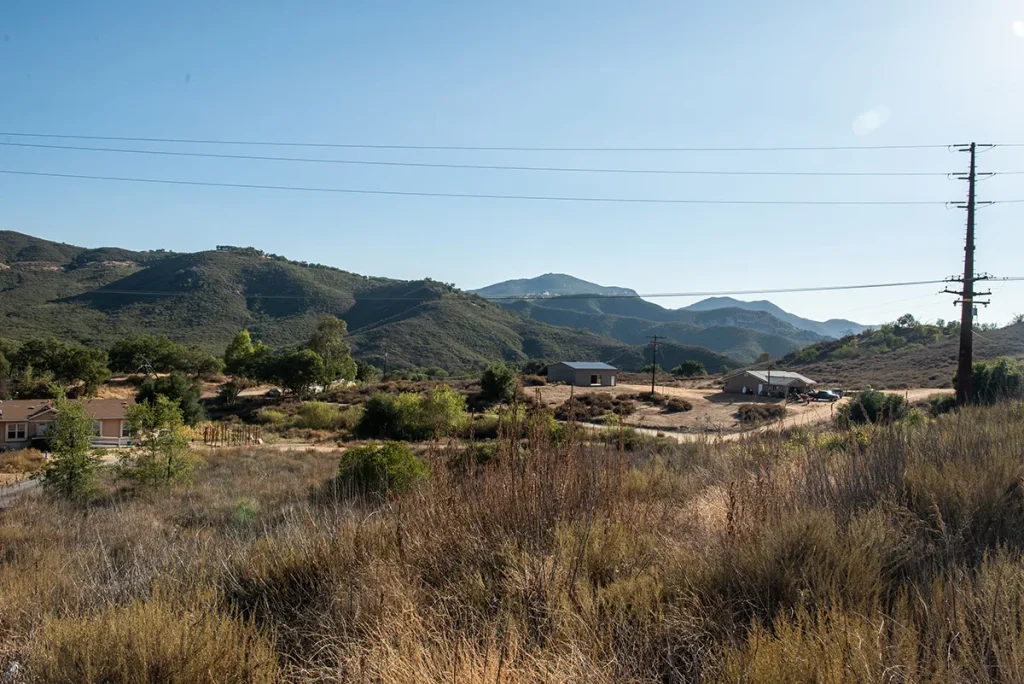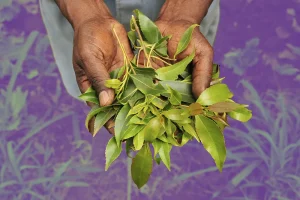*This article was originally published in DoubleBlind Magazine Issue 6 in January 2022.
If you aren’t looking closely, you could easily miss the entrance to the La Jolla Indian reservation, located at the base of Palomar Mountain in Northern San Diego County. It’s about 45-minutes off the highway, down a winding, two lane road that alternates between forest and hilly vistas blanketed with desert boulders. A sharp turn unveils a bird’s-eye view of a few dozen, single-story beige homes, sprinkled throughout the canyon below.
More than 150 people have made this trek since June of 2018, when Shane Norte, a Native man whose grandmother and mother grew up on the reservation, began to hold mushroom ceremonies just next door to his family home on the land. Since Shane, 26, reconnected with his Native identity through a transformative mushroom experience, he’s devoted his life to reconnecting other Natives and non-natives with “what it is to be human,” to feel a profound
connection to one another and to Mother Earth through ceremony.
He was a freshman at Mt. San Jacinto College, a community college in Riverside County, when a close friend asked him if he’d ever tried mushrooms. “I don’t know how to explain it,” he told Shane. “They help you know God.” Shane had felt, since he was a young boy, that something was missing. He knew that he was Payómkawichum or Luiseño, an Indigenous group that has long-inhabited the coastal area of Southern California, and that he had blood-ties to the Paiutes, Lakotas, and Serranos, but he didn’t feel connected to his roots. “I didn’t have a Native identity other than that I knew I was Native American,” he says. “I went to school, watched TV, went on my computer, social media and all these things, but I always knew inside that there was some kind of connection there.”
READ: Native Tribes Should Have More Say in the Psychedelic Movement
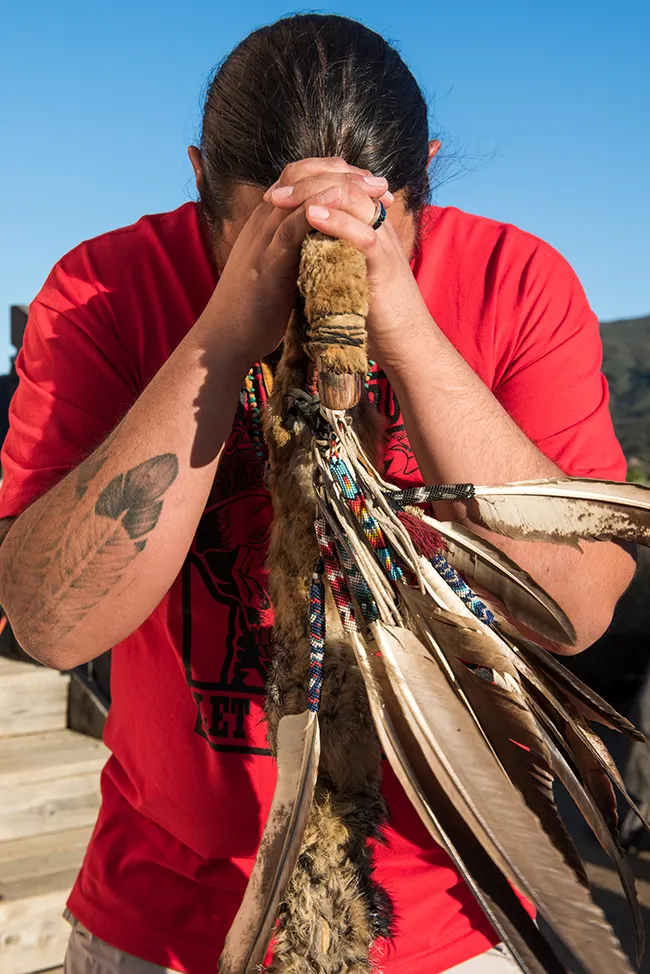

He refers to that first mushroom experience as his “great awakening.” He’d gotten a mason jar of shrooms from his friend and simply took them one day by himself, lying on his childhood bed at his parents’ house. During the trip, he saw his life flash before him, and the mushrooms asked him whether he wanted his life prescribed to him—to be a victim of external expectations—or whether he wanted to carve his own existence on this planet. Previously, he says, all he’d cared about was football. The plan—sanctioned by his dad and step-mom—was to transfer to San Diego State University, a Division One school, and then, perhaps, become a pro-football player—but, the journey had hardly begun, and he was already exhausted from the demands. He and the other players at Mt. San Jacinto were expected to go from studying to practice to studying again, Monday through Sunday, without a single day off. His neck was constantly cramping up— he’d get shooting pains and aches that were so severe they’d sometimes radiate down his legs—and he had chronic headaches. He took hot baths, ice baths, showers, and rolled out his neck, but it was no use. On the rare occasion that he had time off, he couldn’t enjoy himself because he was so drained. So he quit. He quit school, he quit the team, and he started over.
“God heard my prayers. I was brought back to myself, to my Indigenous lineage,” he says of that first mushroom experience. “And I just wanted to use that to come back to the reservation and talk to the youth, to say, ‘Hey, you know, there’s more things than just being on the reservation and being cooped up, doing drugs and alcohol, violence, and all the other things that come with being on the reservation.” It would take him six years before he returned to the reservation to begin holding ceremony, though. The path the mushrooms had put him on—a path to reconnecting with his Native heritage, the movement against the ongoing oppression of Natives in North America, and his role within it—had much to teach him first.
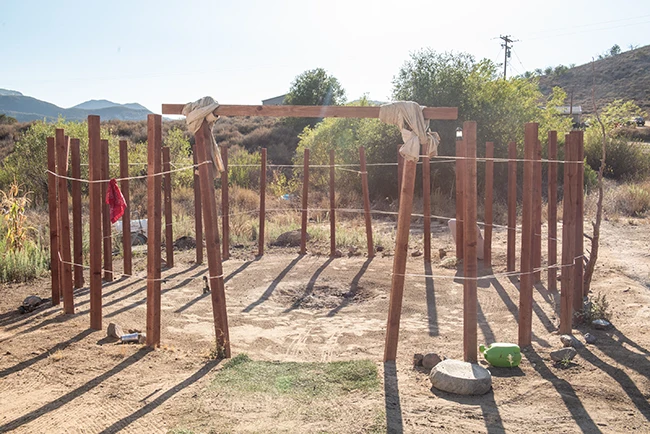
The earliest recorded persecution of Native Americans dates back to the late 15th century when Christopher Columbus arrived in the Americas. On his own, he is responsible for the genocide of an estimated two to eight million people. At the time, Natives lived across the continent, and there was a wide range of sacred traditions and beliefs among the various tribes. All of them, however, were interwoven with animism, the belief that spirituality flows through the material world—differentiating it from Euro-American Christianity’s emphasis on the heavens. Tok Thompson, professor of anthropology at the University of Southern California, says this belief that spiritual power resides in all that is seen and unseen—from the water to the birds to our ancestors and spirits—explains Natives’ reverence for the natural world. It also explains, he says, why even though Indigenous people comprise less than five percent of the world’s population, they preserve 80 percent of the planet’s biodiversity.
How to Grow Shrooms Bundle
Take Both of Our Courses and Save $90!
For centuries, beginning with the earliest settlers, non-natives have not only brutally murdered Natives, but they’ve erased much of their traditions, through forced conversion to Christianity, the enrollment of Native children into boarding schools, and other violent tactics.
“Psilocybin mushrooms are, at their core, an Indigenous technology,” says Brad Bartlett, an attorney, former law professor, and enrolled tribal member, who has represented numerous American Indian tribes and tribal communities for more than two decades. “Given the reach of inter-tribal trade and custom exchange, I’m quite certain there were other North American tribal communities beyond the Mazatec working with psilocybin mushrooms both ceremonially and for healing purposes. But because of conquest and colonization, especially in the US, a lot of those traditions were impacted, lost to time, or hidden away from their oppressors.”
This history of persecution and erasure, says Shane, is why so many Natives are now completely disconnected from their own traditions and why ceremony with plant medicines, but also through sweat lodge, prayer, and storytelling, has the potential to be so profoundly healing.

After that first mushroom trip, Shane began seeking ways of connecting with other Natives and, shortly thereafter, was invited to a sweat lodge in Fontana, a city of around 200,000 people about an hour east of Los Angeles, in San Bernardino County. It was the first time in his life, as an 18-year-old, that he was surrounded by other Natives in ceremony.
Not long after that, he went to a Unity conference in Portland, a decades-old national conference devoted to empowering American Indian and Alaska Native youth. There, he was invited to a peyote meeting in Oklahoma with the Native American Church, where he became fast friends with a young Native man from Oklahoma—a hip hop artist and MC—who invited him to a march on sacred Apache land in Arizona, where a foreign mining company was planning to set up shop and extract copper. He had to be there.
Shane vividly remembers the night that he drove, by himself, in his truck, a 2015 Chevrolet Silverado, to the San Carlos Apache Indian Reservation, about two and a half hours east of Phoenix. He pulled out of his driveway in La Mesa, in San Diego County, at midnight and arrived in the early morning, not knowing anyone, but ready to mobilize.
The reservation was completely empty, and he just drove around, worried someone was going to think he was a trespasser, until he found someone who directed him to the tribal office, where he fell asleep in a chair next to the reception desk, waiting for something to happen. A couple hours later, he was awoken by the sounds of chatter, drums, and singing in Western Apache. He went outside to see dozens of Natives and non-natives—from young children to elders—lining up to march the 45 miles to Oak Flat, a 6.7-square mile piece of land within the Tonto National Forest, which the San Carlos Apaches have held sacred since before recorded history.
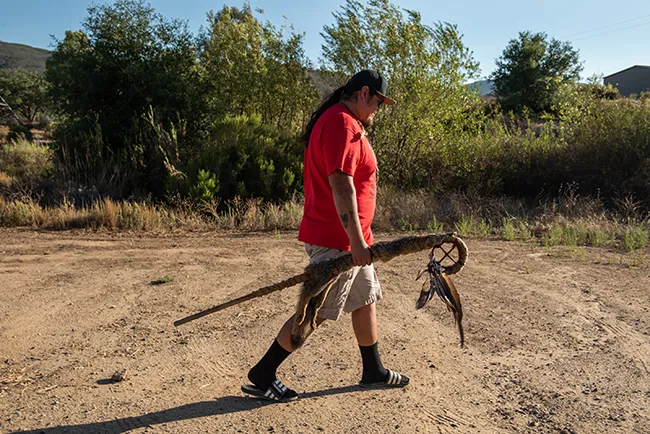
The area, defined by its cavernous red rock formations, contains ancient petroglyphs and continues to be a site where San Carlos Apaches hold ceremonies and collect medicinal plants. US government officials have made promises to preserve Oak Flat, known as Chich’il Bildagoteel in Western Apache, as far back as 1852, when they signed a treaty to protect the land in perpetuity. In 1955, President Dwight D. Eisenhower also protected the area from mining during an expansion of the Tonto National Forest. But as recently as 2014, Arizona Senator John McCain added a section to a defense bill which authorized the transfer of 2400 acres of Tonto National Forest, including Oak Flat, to Resolution Copper, a US subsidiary of two British-Australian mining firms, in exchange for more than 5400 acres of private land. The project could sink Oak Flat nearly 800 feet deep into the earth, destroying a significant portion of the Apache’s sacred site.
Since then, San Carlos Apaches and other Native and non-native allies have been protesting the plans, marching from the reservation to Oak Flat and illegally occupying the area. In January, the San Carlos Apache tribe filed an ongoing federal lawsuit against the US Forest Service to stop the land swap, and there is also currently a bill in Congress, the Save Oak Flat Act, which would repeal the swap and stop the mine.
After marching to Oak Flat that first time, Shane was so inspired that he returned to California, packed up a suitcase, and drove straight back to sleep on the ground in protest. He, along with other Natives, went on to meet with more than 200 tribes on the matter. But after four and a half years of sleeping on the ground, Shane began to grow weary. Weary of the fighting, weary of the never-ending struggle, and also weary of some pettiness and in-fighting that he noticed emerging among Natives, too. And that’s when he knew it was time for him to finally return to the reservation, and to approach the Native struggle from a completely different angle: one that begins with the healing of people’s trauma first so that they may re-emerge into the world, reinvigorated to play their role in society, whatever that may be.
Shane recommends that people who sit in ceremony with him take 15 grams of dried mushrooms—that’s 15 times the amount that’s typically needed to feel the psychedelic effects of mushrooms (around one gram) and more than four times what’s considered a high dose (3.5 grams). They’re free to take less, if they want, but after holding hundreds of ceremonies that’s just the dose he says will help people “break through,” if that’s what they want.
The ceremony itself is unique. It’s based on traditions passed down by the Payómkawichum for generations, and which Shane learned from a medicine man on the La Jolla reservation. The man, his mentor, comes from a lineage
of Payómkawichum medicine men who held ceremony, much like Shane does, except with datura—a psychoactive flowering plant—instead of mushrooms.
These ceremonies, like Shane’s, took place in a Wamkish, a big house used by the Payómkawichum to honor births, the coming of puberty, weddings, funerals, and other rites of passage for millennia. They also incorporate plants that have been used by Natives in the region for generations: sage, elderberry, cedar, and juniper—all collected before the ceremony by the participants from the land—as well as tobacco, which Shane smokes and places into
the fire as an offering to the earth while praying.
The ceremony is also unique in that everyone participates in building the Wamkish together. After driving up the mountain to collect the cedar—which they separate into male and female piles—they collect the elderberry, which grows next to the casino, and the sage, just a walk up the hill from Shane’s house. When the Wamkish isn’t being used, it’s just stakes of wood in a circle in the sand, but, before ceremony, participants wrap the whole structure in canvas and rake the sandy floor. They also collect the wood, chop it, and place it in the circle for the fire, along with the sage, elderberry, and other ceremonial plants collected nearby. At sundown, the ceremony begins.
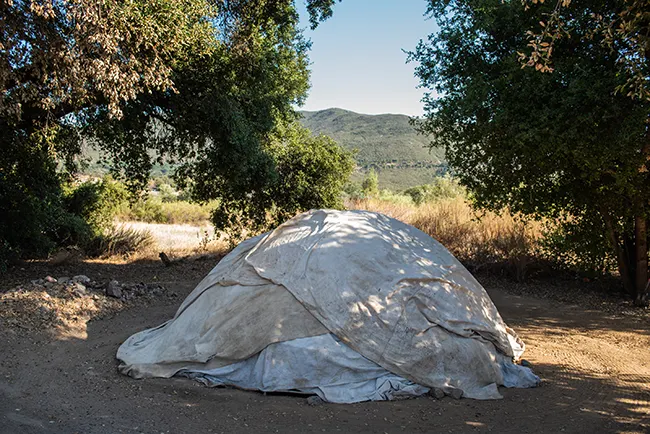
“It’s so different from other ceremonies where you’re mostly laying down, dropping in,” says Mark Matzeldelaflor, a former navy seal and founder of Guardian Grange, a veteran- powered regenerative agriculture and healing network. “You’re sitting up, staring into the fire, in a circle, so you’re a lot more present with everyone else. And the prayers are not just about yourself, they’re about people in the world, the earth. It’s just a very different energy.” After the ceremony, all participants walk to the other side of Shane’s land to participate in a sweat lodge, where they come down from and process what they experienced while on the mushrooms.
Matzeldelaflor is among many veterans and non-veterans who Shane has welcomed to his land and, unlike psychedelic ceremonies which cost hundreds, often thousands of dollars, Shane’s ceremonies are entirely free. This choice is a part of his guiding philosophy: Everyone who feels called should have the opportunity to sit in ceremony, to reconnect with themselves and the earth. He’s not opposed to psychedelics being administered in more clinical settings, but he feels that ceremony—”the natural way”—makes for a holistic experience that engenders a crucial feeling of connectivity to the earth. It’s deeply unethical, he believes, for the government to interfere with these millennia-old traditions.
How to Grow Shrooms Bundle
Take Both of Our Courses and Save $90!
That’s why he’s joined the national board of Decriminalize Nature, a group that advocates for the decriminalization of natural psychedelic plants and fungi as opposed to a more regulated psychedelic industry.
Shane’s reminded of the need for humanity to be reconnected with the sacredness of the earth everyday. Just in front of his house, his view of the forest is disrupted by giant power lines, put up by the San Diego Gas & Electric Company without Shane’s permission. A few years ago, SDGE—what Shane describes as one of the worst government agencies imaginable— pulled a bunch of trucks in front of his house and just started drilling. It shut the power off in his home, in the dead of summer, when it was more than 100 degrees outside and his son had just been born. “We had to go stay in a hotel for a week and a half, because it was so hot,” he says. “My son could have died in the heat.”
Every day, military choppers, too, fly low over the reservation, disrupting the quiet and emitting toxic chemicals over the oak trees. “I’ve even seen them fly over the riverbed down there,” Shane says with visible frustration as we’re walking through the brush to collect sage. It’s nearing sunset and a flock of quails scurry across the dirt road, from one bush to another. “Quail, rabbit, corn, and deer,” Shane remarks, “that’s what we’ve been living on forever out here.” We reach the bushes of white sage, and I lean over to collect some leaves, but then I notice Shane has paused. He’s reaching into a small bag of tobacco and sprinkling it over the bushes. “An offering,” he says. “Would you like some? I always try to give thanks, to give something in return, before I take anything from the earth.”

DoubleBlind is a trusted resource for news, evidence-based education, and reporting on psychedelics. We work with leading medical professionals, scientific researchers, journalists, mycologists, indigenous stewards, and cultural pioneers. Read about our editorial policy and fact-checking process here.

DoubleBlind Magazine does not encourage or condone any illegal activities, including but not limited to the use of illegal substances. We do not provide mental health, clinical, or medical services. We are not a substitute for medical, psychological, or psychiatric diagnosis, treatment, or advice. If you are in a crisis or if you or any other person may be in danger or experiencing a mental health emergency, immediately call 911 or your local emergency resources. If you are considering suicide, please call 988 to connect with the National Suicide Prevention Lifeline.

